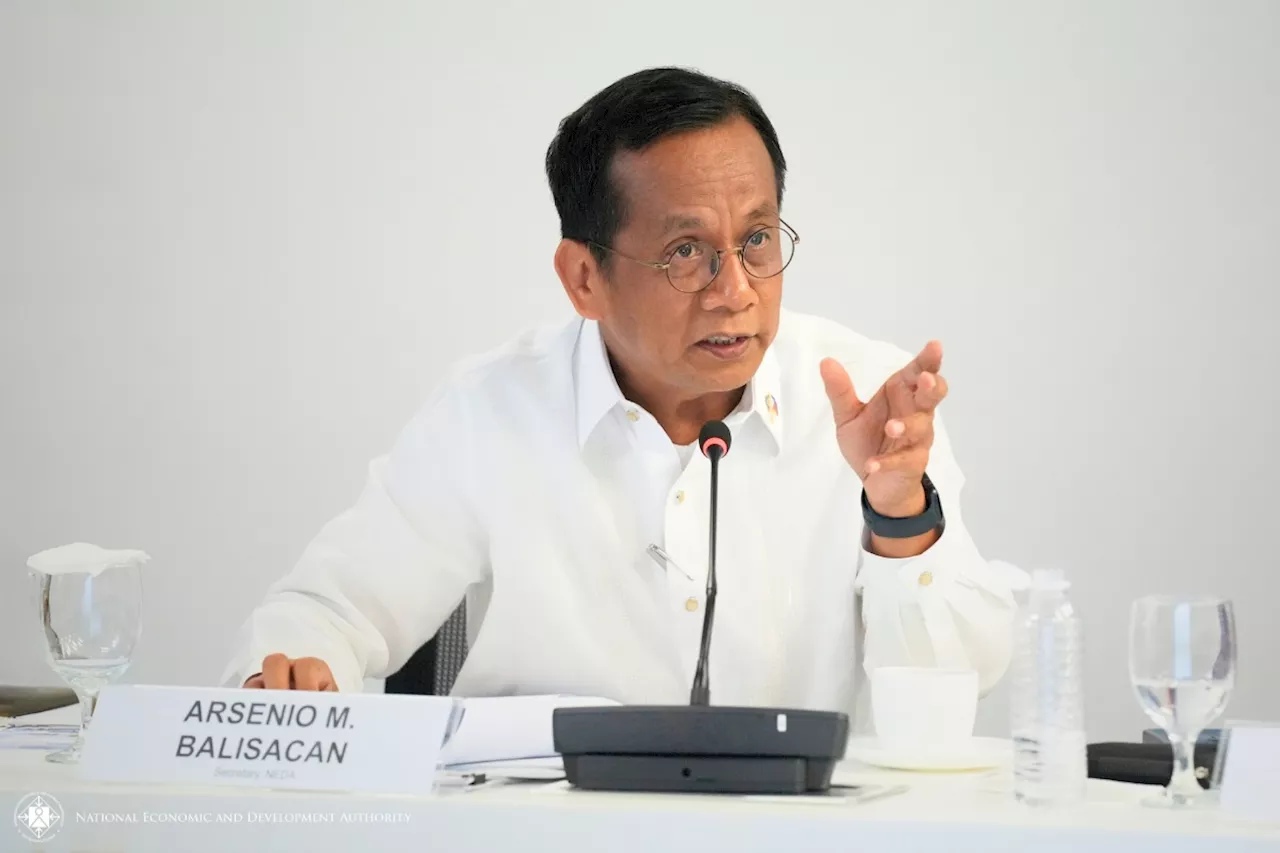The Philippine government has outlined its plans for 2025, focusing on maintaining robust economic growth, controlling inflation, and further reducing poverty. Despite facing challenges, the economy has shown strong performance in the first three quarters of 2024, with all sectors recovering to pre-pandemic levels.
The Philippine government is steadfast in its commitment to maintaining high economic growth, keeping inflation low and stable, and strengthening its fiscal foundations. Despite facing both external and domestic challenges, the Philippine economy has demonstrated a positive and robust trajectory.
According to National Economic and Development Authority (NEDA) Secretary Arsenio Balisacan, during the presentation of the 2024 Philippine Development Report (PDR 2024) at the NEDA Board, chaired by President Ferdinand Marcos Jr., the Philippine economy grew by an average of 5.8 percent in the first three quarters of 2024. All sectors have recovered to their pre-pandemic levels in terms of expenditures. Inflation averaged 3.2 percent in 2024, comfortably within the government's target range of 2.0 percent to 4.0 percent. Balisacan emphasized the importance of ensuring affordable and accessible food for all Filipinos by promoting efficient market operations and refining targeting programs for low-income and vulnerable populations.The labor market has also shown significant improvements, with the unemployment rate averaging 4.3 percent in 2024, surpassing the government's target range of 4.4 percent to 4.7 percent. Poverty among Filipinos has declined to 15.5 percent in 2023 from 18.1 percent in 2021, representing approximately 2.4 million Filipinos lifted out of poverty. Balisacan expressed optimism that with the robust labor market performance and inflation deceleration in 2024, further poverty reduction will be observed when new poverty data becomes available. The government aims to reduce poverty incidence to 13.2 percent or lower in 2025.The commitment to high economic growth remains strong, with a target range of 6.0 percent to 8.0 percent for 2025. Proactive measures will be implemented to keep both headline and food inflation low and stable (2.0 percent to 4.0 percent). To achieve these ambitious goals, Balisacan stated that the government will continue to drive socioeconomic transformation by diversifying and developing new growth drivers, facilitating the adoption of emerging technologies, enhancing economic productivity, and fostering meaningful collaboration with all stakeholders. Budget adjustments for 2025, following President Marcos' veto of several line items in the 2025 General Appropriations Act, have been made. The Marcos administration assures the public that critical health, education, and infrastructure projects and initiatives will continue to receive adequate funding and support for implementation this year. NEDA's chief emphasized that President Marcos' directive is clear: the government will prioritize the country's most pressing development needs, ensuring not only the continuation but also the enhancement of public services to support both economic growth and social inclusion
ECONOMY INFLATION POVERTY PHILIPPINES GROWTH DEVELOPMENT GOVERNMENT
Philippines Latest News, Philippines Headlines
Similar News:You can also read news stories similar to this one that we have collected from other news sources.
 Philippines Revenue Agencies Likely Hit 2024 Targets, 2025 Aims HighThe Bureau of Internal Revenue (BIR) and the Bureau of Customs (BOC) are projected to meet their 2024 revenue targets, according to Finance Secretary Ralph Recto. The government plans to increase revenue collection in 2025, with the BIR and BOC playing crucial roles.
Philippines Revenue Agencies Likely Hit 2024 Targets, 2025 Aims HighThe Bureau of Internal Revenue (BIR) and the Bureau of Customs (BOC) are projected to meet their 2024 revenue targets, according to Finance Secretary Ralph Recto. The government plans to increase revenue collection in 2025, with the BIR and BOC playing crucial roles.
Read more »
 Philippines Plans to Integrate Sukuk Bonds into 2025 Financing StrategyThe Philippine government is taking another step towards developing its Islamic finance sector by incorporating Sukuk bonds into its financing plans for 2025. This move aims to promote financial inclusion among the Muslim population and strengthen economic ties with key Asean and GCC countries.
Philippines Plans to Integrate Sukuk Bonds into 2025 Financing StrategyThe Philippine government is taking another step towards developing its Islamic finance sector by incorporating Sukuk bonds into its financing plans for 2025. This move aims to promote financial inclusion among the Muslim population and strengthen economic ties with key Asean and GCC countries.
Read more »
 NEA Aims for 94% Electrification of Remote Households by 2025The National Electrification Administration (NEA) is committed to electrifying 94% of remote households in the Philippines by 2025, despite facing budgetary constraints. The state-owned corporation prioritizes Mindanao provinces and remains optimistic about achieving its target with government support.
NEA Aims for 94% Electrification of Remote Households by 2025The National Electrification Administration (NEA) is committed to electrifying 94% of remote households in the Philippines by 2025, despite facing budgetary constraints. The state-owned corporation prioritizes Mindanao provinces and remains optimistic about achieving its target with government support.
Read more »
 Jetour Auto Philippines Plans Another Epic Raffle at Midori Clark in 2025Eight lucky winners received brand-new Jetour T2 SUVs in the 2024 raffle. JAPI plans to outdo itself in 2025 with an even more exciting giveaway at the Midori Clark Hotel and Casino.
Jetour Auto Philippines Plans Another Epic Raffle at Midori Clark in 2025Eight lucky winners received brand-new Jetour T2 SUVs in the 2024 raffle. JAPI plans to outdo itself in 2025 with an even more exciting giveaway at the Midori Clark Hotel and Casino.
Read more »
 Career Con 2025 aims to connect jobseekers to over 100 firmsParticipating employers hail from various industries, such as retail, banking and logistics
Career Con 2025 aims to connect jobseekers to over 100 firmsParticipating employers hail from various industries, such as retail, banking and logistics
Read more »
 Philippines Sustainability Regulations: 2024 Roundup and 2025 OutlookThis article provides an overview of the evolving sustainability landscape in the Philippines, focusing on the recently issued regulations and anticipated changes for businesses in 2025 and beyond. It highlights the Securities and Exchange Commission's (SEC) Sustainability Reporting Framework and the revised SuRe Form, which includes mandatory climate-related risk assessments and financial impact analysis. The article also discusses the phased implementation of mandatory disclosures for different company tiers and encourages businesses to begin conducting gap assessments against the SuRe Form and IFRS S1/S2 guidelines to ensure compliance and leverage sustainability reporting for strategic value creation.
Philippines Sustainability Regulations: 2024 Roundup and 2025 OutlookThis article provides an overview of the evolving sustainability landscape in the Philippines, focusing on the recently issued regulations and anticipated changes for businesses in 2025 and beyond. It highlights the Securities and Exchange Commission's (SEC) Sustainability Reporting Framework and the revised SuRe Form, which includes mandatory climate-related risk assessments and financial impact analysis. The article also discusses the phased implementation of mandatory disclosures for different company tiers and encourages businesses to begin conducting gap assessments against the SuRe Form and IFRS S1/S2 guidelines to ensure compliance and leverage sustainability reporting for strategic value creation.
Read more »
